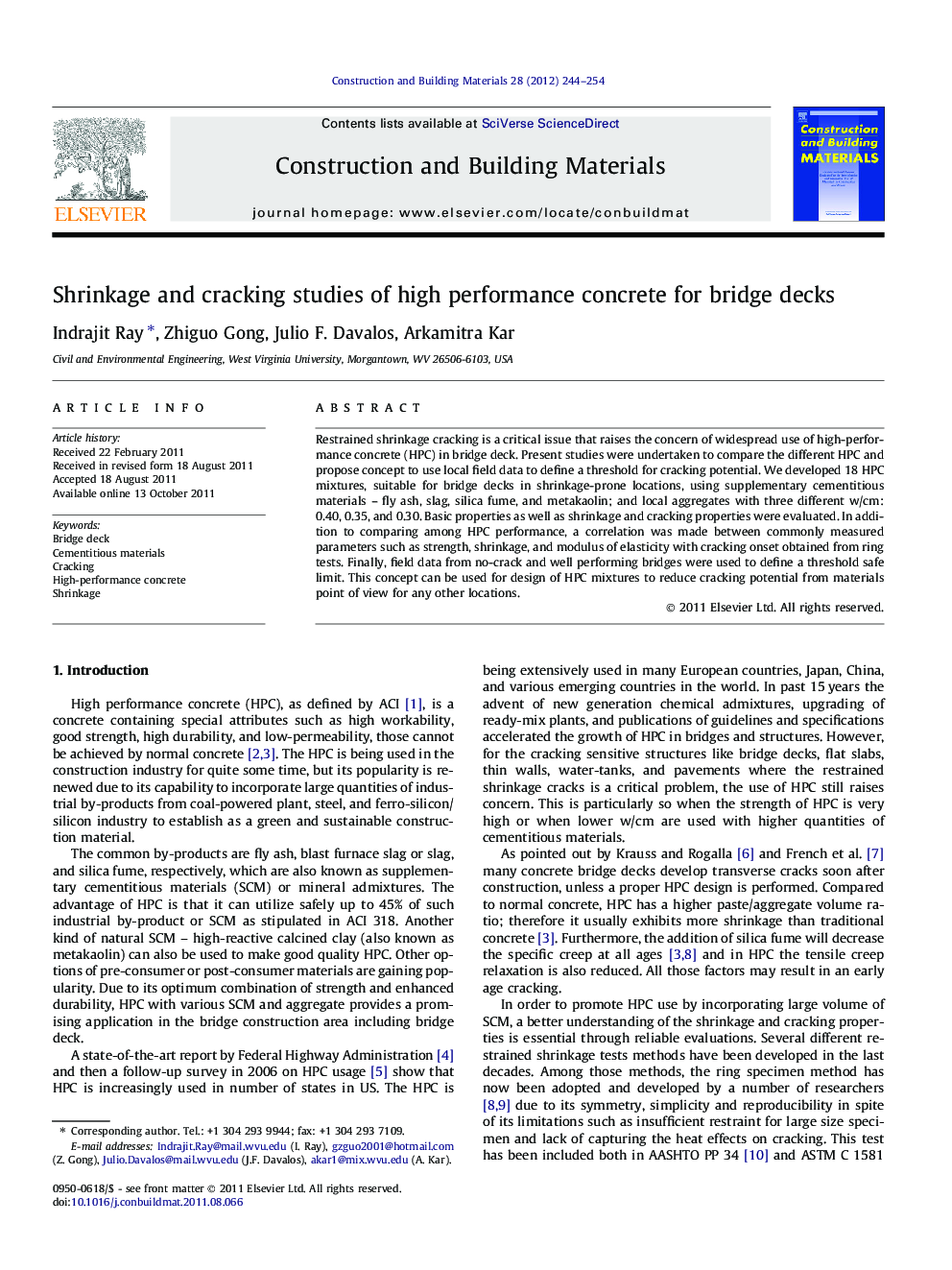| Article ID | Journal | Published Year | Pages | File Type |
|---|---|---|---|---|
| 259570 | Construction and Building Materials | 2012 | 11 Pages |
Restrained shrinkage cracking is a critical issue that raises the concern of widespread use of high-performance concrete (HPC) in bridge deck. Present studies were undertaken to compare the different HPC and propose concept to use local field data to define a threshold for cracking potential. We developed 18 HPC mixtures, suitable for bridge decks in shrinkage-prone locations, using supplementary cementitious materials – fly ash, slag, silica fume, and metakaolin; and local aggregates with three different w/cm: 0.40, 0.35, and 0.30. Basic properties as well as shrinkage and cracking properties were evaluated. In addition to comparing among HPC performance, a correlation was made between commonly measured parameters such as strength, shrinkage, and modulus of elasticity with cracking onset obtained from ring tests. Finally, field data from no-crack and well performing bridges were used to define a threshold safe limit. This concept can be used for design of HPC mixtures to reduce cracking potential from materials point of view for any other locations.
► Evaluated cracking and shrinkage of high-performance concrete (HPC) bridge decks. ► Compared the cracking performance of HPC produced with different materials. ► Correlated strength, shrinkage, modulus of elasticity with cracking onset days. ► Recommended threshold limit to mitigate cracking by comparing with sound bridges.
